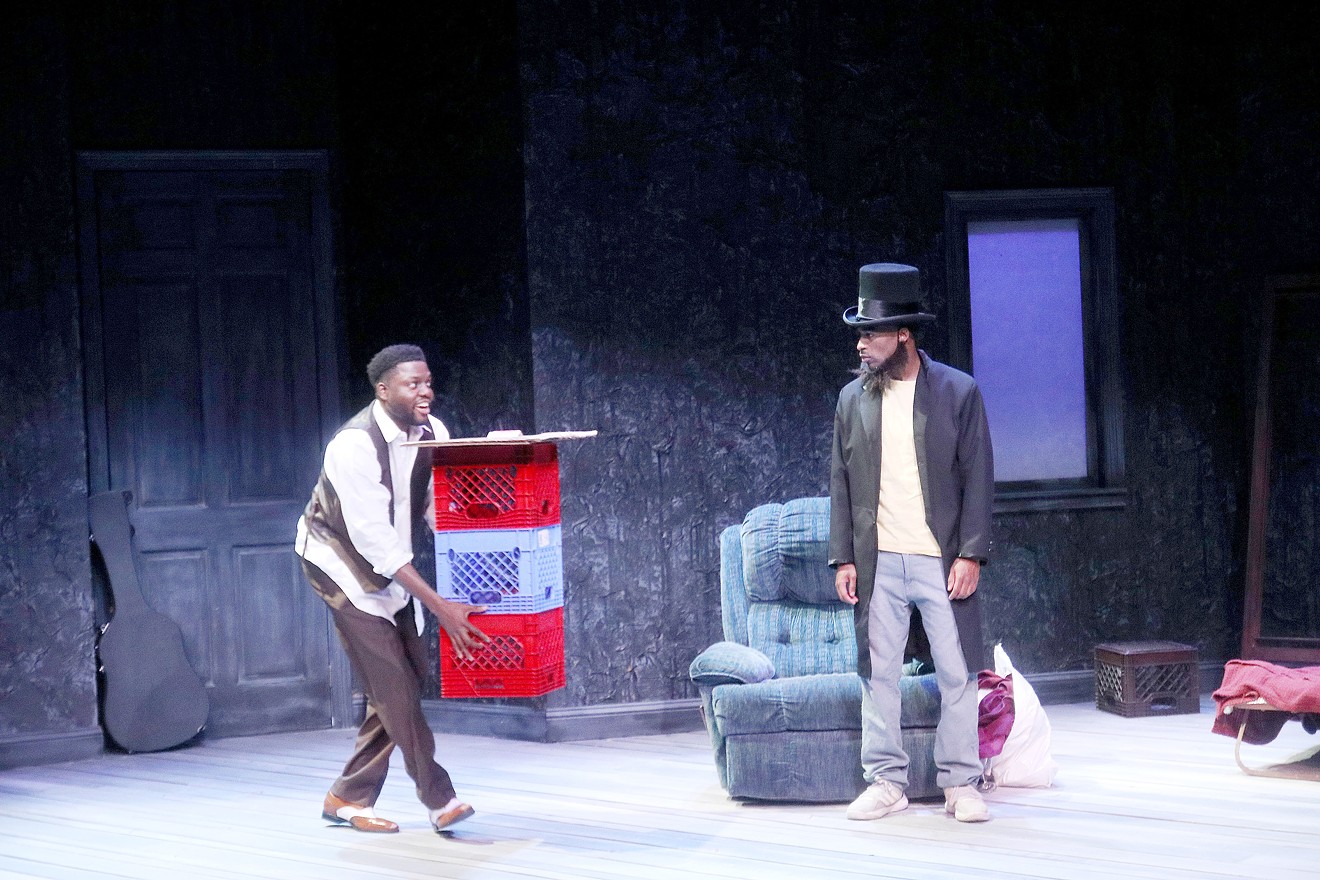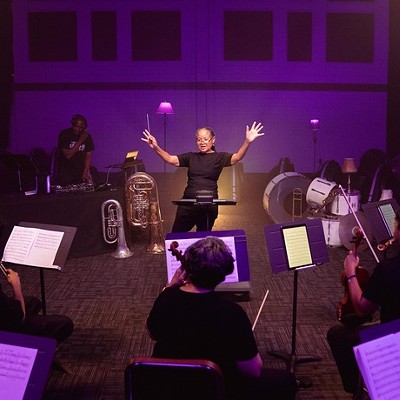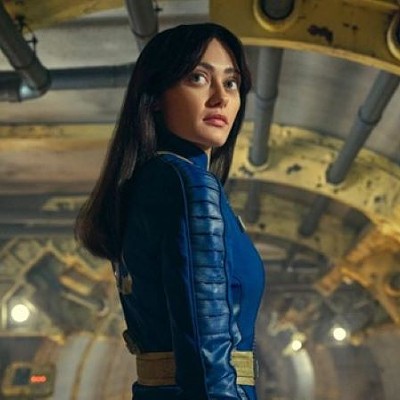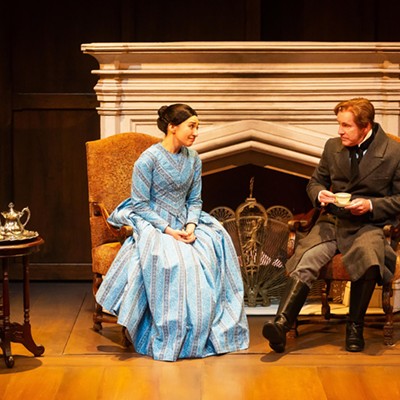Imagine you’re at a dinner party, laughing and having a good time, when one of the other guests, the father of Lincoln and Booth, the two brothers at the center of Suzan-Lori Parks’s Topdog/Underdog, decides to regale the small gathering with the story behind his sons’ names. It was a joke, he says, fatalistic joke identities bestowed to them at their eventual expense.
The laughter stops, replaced with a tableful of awkward grimaces that are supposed to resemble polite smiles but don’t quite because realization and truth — if you’re willing to hear it — tends to be pretty uncomfortable. That sums up the mood of Parks’s Pulitzer Prize winner, a darkly comic tragedy presented by the School of Theatre & Dance at the University of Houston’s Kathrine G. McGovern College of the Arts.
Topdog/Underdog opens with Booth practicing a card game, quickly hiding it when his brother, Lincoln, decked out in bearded whiteface and stovepipe hat, gets home. Link, an Abraham Lincoln impersonator who lets kids and tourists shoot him in the back of the head in the world’s most morbid arcade game for $314 dollars a week, has been staying with his little brother since his wife kicked him out. Booth is a layabout, more concerned with picking up Link's old racket — three-card monte — than with getting an above-the-board nine-to-five. He’d like Link to teach him, but Link refuses, having sworn off the cards when his partner was killed. It’s but one point of contention revealed between the brothers in this complex play.
There’s no denying Topdog/Underdog is well-written. With its frank point of view, layered allegories and incredible humor, Parks’s script is strong, leaving only the question of what a production will do with it. Here, the answer is a lot. In the hands of director Matthieu Chapman, Topdog/Underdog is pretty darn good.
Ultimately, Topdog/Underdog is a two-man show that can be tanked with miscasting, but luckily Yao Dogbe as Booth and Derrick Moore as Lincoln prove to be more than capable with such demanding material. Dogbe plays the charm, impulsivity and childishness of Booth best; so well, in fact, that the leap to eventual violence is a little hard to follow. Moore’s Link is a perfect foil to Booth’s boastful lies and slicklessness, thoughtful and more than a little beaten down, though his motivation in the second act is a bit muddled as well. Their chemistry throughout, however, keeps the play afloat, and makes it all the harder to watch them go from glimpses of camaraderie to rivals.

Yao Dogbe and Derrick Moore in the University of Houston Kathrine G. McGovern College of the Arts' production of Topdog/Underdog by Suzan-Lori Parks.
Photo by Pin Lim, Forest Photography
With lighting designer Addie Pawlick, the wall is used to great effect with explicitly expressionistic elements in play. Pawlick uses extreme contrasts of light and dark, shadows and sharp light to really enhance the production and highlight some interesting parallels between the themes in Parks’s work and the origin of German Expressionism, a stylistic reaction to trauma (in this case, from World War I) that played with lighting, among other things, to explore themes like insanity and death. They complement each other well, while also drawing out horror elements, like the cracks that appear and spread across the wall, a physical manifestation of a shattered psyche.
There are, however, some missteps. Though the music within scenes is well-placed and often fun, the transitions don’t work as well and a repeated footstep sound effect had an odd cadence to it. But the big problem is the use of projections. The motif of projected images is heavy handed and distracting while undermining the actors’ performances and effectively interrupting the momentum of various scenes. Instead of feeling the weight and trajectory of history — specifically, African-American history — the quick flashes take you out of the play to question what you just saw.
It would take more than one viewing (and a lot of thinking) to understand all that there is in this play, which is equal parts family drama, grotesque historical reenactment and Cain and Abel re-imagining. But Topdog/Underdog is worth it, as is UH’s production of it.
Topdog/Underdog continues at 8 p.m. November 4, 6 and 8-11; and 2 p.m. November 5 and 12. November 3 through 12 at the Quintero Theatre, University of Houston, 3351 Cullen. For information, call 713-743-3388 or visit uh.edu/kgmca//theatre-and-dance. $10 to $20.







